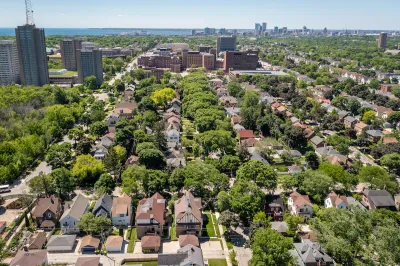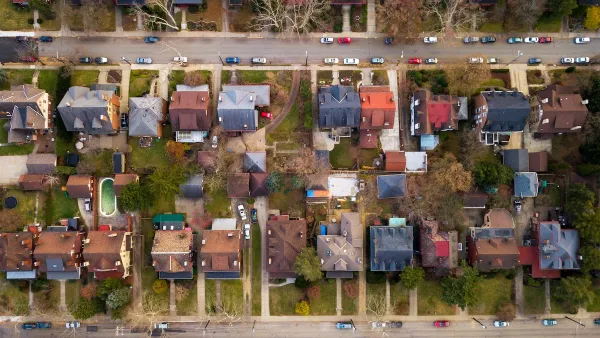The proposed changes would permit more flexible housing development while limiting changes in historic neighborhoods and on smaller streets.

A zoning reform proposal from Milwaukee Mayor Cavalier Johnson aims to promote a wider variety of housing types and make housing more affordable, writes Jeramey Jannere in Urban Milwaukee. The proposal calls for allowing live-work units and accessory dwelling units (ADUs) in most of the city, allowing three- and four-story buildings in more zones, and unbundling the cost of parking from rent, among other adjustments. Today, 40 percent of residential zones in Milwaukee allow only single-family homes.
The changes would largely affect commercial corridors and areas near transit. “At the same time it allows more options across the city, it also has components, based on lot width and other factors, designed to restrict large or wide new buildings from being developed in historic lower-density residential areas. The net result is an attempt to drive the highest density new development to commercial areas or existing high-density areas, while allowing only incremental changes in density on residential side streets.” Critics of this practice warn that limiting upzoning to major streets disproportionately exposes residents of multifamily housing to air pollution and other impacts.
FULL STORY: Zoning Changes Would Clear Path To 1 Million Residents (Milwaukee)

National Parks Layoffs Will Cause Communities to Lose Billions
Thousands of essential park workers were laid off this week, just before the busy spring break season.

Retro-silient?: America’s First “Eco-burb,” The Woodlands Turns 50
A master-planned community north of Houston offers lessons on green infrastructure and resilient design, but falls short of its founder’s lofty affordability and walkability goals.

Delivering for America Plan Will Downgrade Mail Service in at Least 49.5 Percent of Zip Codes
Republican and Democrat lawmakers criticize the plan for its disproportionate negative impact on rural communities.

Test News Post 1
This is a summary

Test News Headline 46
Test for the image on the front page.

Balancing Bombs and Butterflies: How the National Guard Protects a Rare Species
The National Guard at Fort Indiantown Gap uses GIS technology and land management strategies to balance military training with conservation efforts, ensuring the survival of the rare eastern regal fritillary butterfly.
Urban Design for Planners 1: Software Tools
This six-course series explores essential urban design concepts using open source software and equips planners with the tools they need to participate fully in the urban design process.
Planning for Universal Design
Learn the tools for implementing Universal Design in planning regulations.
EMC Planning Group, Inc.
Planetizen
Planetizen
Mpact (formerly Rail~Volution)
Great Falls Development Authority, Inc.
HUDs Office of Policy Development and Research
NYU Wagner Graduate School of Public Service





























